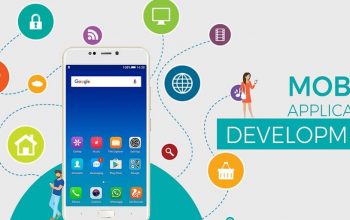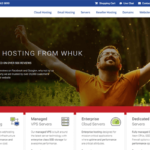Wondering how the right mobile backend can be selected as a service?
For you, we have the answers.
WHAT IS MBAAS?
The following backend tools can be used by a smartphone app:
- infrastructure;
- Storage;
- APIs for the Social Network;
- As the essence of the app specifies, numerous other APIs.
Imagine a situation where you and other entrepreneurs repeatedly waste time consuming these tools in the creation of backend systems. Often, take into consideration the time needed for your mobile app to configure servers, networks and related services from scratch.
You’re going to waste precious time, because the opponents are going to sprint ahead of you, so they’re not wasting any time improving the backend. The ‘Quick Mover value’ would be earned by your rivals.
This backend production time is saved by an MBaaS, so you can concentrate on your frontend UI / UX, and your business logic. It’s a ready-made cloud platform that helps you and related companies and entrepreneurs to leverage services from the backend. Learn more about MBaaS in the segment named “Who, Where and Why?” ”.
You get ready connections to cloud storage, numerous APIs, and other mobile services with an MBaaS. Your mobile app only needs to ingest these and offer the benefit through a front-end to your consumers. The ‘Quick Mover Benefit’ you don’t lose.
A MBAAS Rewards
To understand why an MBaaS is significant, you need to understand the mobile apps have brought about the paradigm change. Know what Drucker said about marketing ‘s importance?
It’s the company’s ads that has forever improved smartphone applications. If you’re beginning a company seeking to market to consumers around the globe, you couldn’t compete without a website before. Although you do need a website, if you don’t have a smartphone app for such a venture, you can no longer sell your product or service now.
Businesses recognize that and sprint with their smartphone app versus time to sell their goods or services. Learn about it in “The Growing Change to Mobile App Culture: Selling Across The Small Screen.”
Launching your mobile app rapidly is an utmost necessity for you, and the app must perform to a reasonable degree. However, it is a nightmare to operate on your mobile backend system from the ground up, and you would probably face a pause in releasing your mobile app.
The benefits of an MBaaS lie in simplifying the development of this backend for you. E.g. for:
- You would need to implement several proprietary technologies if you wanted to run the backend from the ground-up. Data types differ in range, and the amount is high, and this needs to be controlled. An MBaaS does all these stuff for you.
- Now recognize the number of network networks and multiple devices that must be worked smoothly on by your mobile app. The ambiguity, you will see. An MBaaS looks after it for you.
- You should leave the control of your users to MBaaS.
- Another field where an MBaaS does all the heavy-lifting is the storage of permanent records, so you don’t have to.
- Your MBaaS can take care of things. You don’t have code push update systems.
- Your MBaaS also takes steps to include geo-location according to your company needs.
- A MBaaS takes control of the overall administration of the API and only resources are accessed by the app. At the completion, you don’t need to code integrations. This is a huge gain, since it saves the programmers valuable resources.
- Modern mobile applications depend strongly on the design of microservices. Instead of a giant scheme, this design method facilitates the development of smaller projects for diverse facilities. This benefits because multiple providers usually have distinct market profiles. The design for microservices makes scaling for multiple services. In “Big Business Java Projects Architecture,” you will learn about the advantages of this architectural solution. An MBaaS implements the framework of microservices, and once you use an MBaaS, you will enjoy the advantages.
- It is challenging for entrepreneurs to create dedicated networks for their smartphone applications. For them, an MBaaS with its ‘Cloud-based model eliminates this barrier.
You will certainly create all of these on your own. Using so, though, diverts the attention away from supplying the multinational consumers with value. For your critical front-end design and growth, an MBaaS frees you up.
Remember, because of the immense artistic opportunity it provides, your mobile developers even love operating on the front-end. Hence, when you let an MBaaS provider take charge of your mobile app backend, you can also have a satisfied and efficient squad. Learn further on the advantages of MBaaS in “The advantages of MBaaS and the architecture of a smartphone app.”
How do I pick a smartphone backup as a service provider?
When selecting an MBaaS provider for your mobile app, you need to review the following:
- The most critical one is ease of usage.
- The server-side code, information, databases etc. must be safely maintained on the Cloud by the vendor.
- It should have a well-tested infrastructure needed for a mobile app for database and transaction processing capabilities.
- To link your app to the different cloud providers you need, your provider must provide you with APIs.
- Ease of backend data management is important. For this, the supplier can have the correct procedures, strategies, and instruments (PM&T).
- Contact should be safeguarded between users and servers.
- Outstanding professional assistance is a must.
- It must be quick to do business with the supplier!
For further information on the requirements, read the G2 Crowd MBaaS analysis.
COMPARISON MBAAS:
It’s important to remember that Parse was a pioneer in the MBaaS space until I launched an exercise to evaluate providers. Several MBaaS providers were motivated by it, but the business closed down in 2017.
Firebase for Google
In 2014, Google acquired Firebase and effectively joined the increasing room of MBaaS with it. We may categorize the features into three categories: Firebase, and these are ‘Build’,’ Grow’, and ‘Earn’.
The group ‘Create’ provides the following:
- A cloud storage that you can set up easily.
- Using OAuth, Google, and Facebook security systems. A clause is also required for custom facilities.
- Cloud communications, like services for alerts.
- Petabyte-storage for size.
- High-quality ‘Information Distribution Network’ (CDN) hosting.
- Instruments and the setting for research.
- Features for accident monitoring.
The functionality of the ‘Develop’ group help you evaluate your user experiences such that your user experience will develop. That are like the following:
- Mobile-tailored and Google Analytics-based analytics.
- Analytics and campaigns and notification.
- Your App Indexing.
- Enables Complex Connection.
For ads, the ‘Earn’, i.e. the third class, is.
There is a free rate, which, if you start tiny for your app, will be good news for you. On the Firebase page, find out their pricing.
CloudKit from Apple
Apple launched it in 2015 and this is the one for you if you are searching for an iOS backend as a service. When you use CloudKit, it is simple to sync with other iOS applications.
Included are the following services:
- Authentication for apps.
- Databases: proprietary, public, and shared.
- Collection resources for your investments in your app.
- Server-side Scaling.
- Automatic syncing with platforms from Apple.
- Data Exchange.
There is a free rate, and you then begin to pay costs above the mark. The CloudKit dashboard lets you review your app’s server operations. It also helps you to monitor patterns and to calculate metrics such as user experience and usage of bandwidth.
When you are creating basic applications, CloudKit is really nice. For further info, check out the Apple CloudKit website.
With CloudKit, there are a few limitations, as follows:
- In order to incorporate server-side logic, it has no functionality.
- To save info, users must sign-in to iCloud.
- Developers need to run application-specific logic, which is a sub-optimal architectural technique, on the client side.
- It solely supports iOS applications.
In “How to Pick the Right Mobile Backend As A Service (MBaaS)”, learn all about the pros and cons of CloudKit.
Kinvey
Among Mobile App Production Platforms (MADPs), Gartner Magic Quadrant 2018 calls Kinvey a “Visionary”. Study all about it on this web page for Development.
The Q3 2017 survey by Forrester Wave Corporate Health Clouds places Kinvey at the top. Study all about it on this web page for Development.
A large range of features are given by Kinvey, as follows:
- Enterprise data mobilization: With Enterprise or SaaS data stores, you can quickly combine.
- Many cloud-native services, ready-made solutions, and software models help improve efficiency for the production team.
- Kinvey’s protection and enforcement status is very good. It’ll be easy to comply with your GDPR and HIPAA. On the client, in-transit, and at rest, the platform supports data encryption.
- Robust technology for clouds.
- The framework boasts rich analytics and organizational intelligence.
- You can build native, hybrid, web, and ‘Internet of Things’ (IoT) applications using Kinvey ‘Software Development Kit (SDK) or other development tools.
You have access to a series of extensive tools for studying, which makes it easier to get started. On their website, read more about Kinvey.
Amazon Mobile Online Applications
AWS MBaaS offers a large variety of options, as follows:
- Starter kits for developers to begin with their app easily.
- It provides different application choices, including iOS, Linux, Web Javascript, and React Native.
- To create, test , and deploy, you should automate the DevOps pipeline.
- Analytics to assess your interaction with the customer.
- Integration of text, SMS, and push update.
- Multi-Factor Secure Authentication (MFA).
- Amazon DynamoDB-powered databases.
- Robust infrastructure in the Cloud, where Amazon is a recognized pioneer. The infrastructure is extremely elastic, and CDN is part of that.
- Services for storage.
- Profound learning.
- Amazon Pinpoint supports for ‘A / B Checking’ in extensive testing.
AWS MBaaS, which is a drawback, is not easy to use. They have a tier that is accessible. For further info, read the AWS MBaaS website.
SashiDo
SashiDo uses an open-source technology named Parse. A main benefit of this MBaaS framework is that many developers have been incredibly loyal to Parse and find SashiDo very familiar and simple to use.
It contains all the characteristics that Parse had produced. Moreover, it gives the following:
- Code from the Cloud.
- Employment in History.
- NodeJS Apps hosting.
- Optimization of databases.
- Notifications from Drive.
The agency has an exceptional customer service staff, which is a huge asset. There is no premium tier, although there is a 14-day free trial duration only.
However, I agree that, combined with their ambitious potential expansion plans, the excellent technology and exceptional customer experience greatly outweigh the absence of a free tier. On the SashiDo website, learn more.
Kumolos
For mobile app production firms, Kumolos is a perfect MBaaS! These businesses are basically their intended clients, and their offerings are tailored towards these businesses that create applications.
Their generic MBaaS platform features are below:
- Notifications from Drive.
- Reporting of crashes.
- Sturdy Cloud.
- Analytics and Documentation.
- Optimization of the app store (ASO).
They, however, have the following complementary facilities in accordance with their target consumer segment:
- Company console: You can find this very helpful if you are a mobile app production business. All the applications for the multiple consumers are accessible all in one location. In reality, you will display your success stories right in the cloud when you send your sales pitch to a prospective buyer!
- Client portal: This is for your users , i.e. those you have created smartphone applications for. A Content Management System ( CMS) is accessible such that the users, without needing to engage you, can do small content changes themselves. They will also see the use of their computers, analytics for consumer experience, etc. Know that this study of consumer interaction is about their clients! The consumer platform has your identity, which helps to engage your loyal clients as another promotional method for you.
There’s no free level for Kumolos, and you can see why. They have a price dependent on characteristics, which is simple to understand. To learn more about feature-based pricing, read’ How to Develop Your SaaS Pricing Model’.
So, by picking the right vendor, how can you create the best backend for a smartphone app? Here, the background plays an important function.
Kumolos is an obvious option if you are an organization with smartphone applications. On the other side, SashiDo could be your bet if you or your team were heavily involved in Parse. Again, Google Firebase is your option if you want to feel better partnering with the industry leader. I suggest that you thoroughly examine the pros and cons before settling on a solution for MBaaS and app growth.








